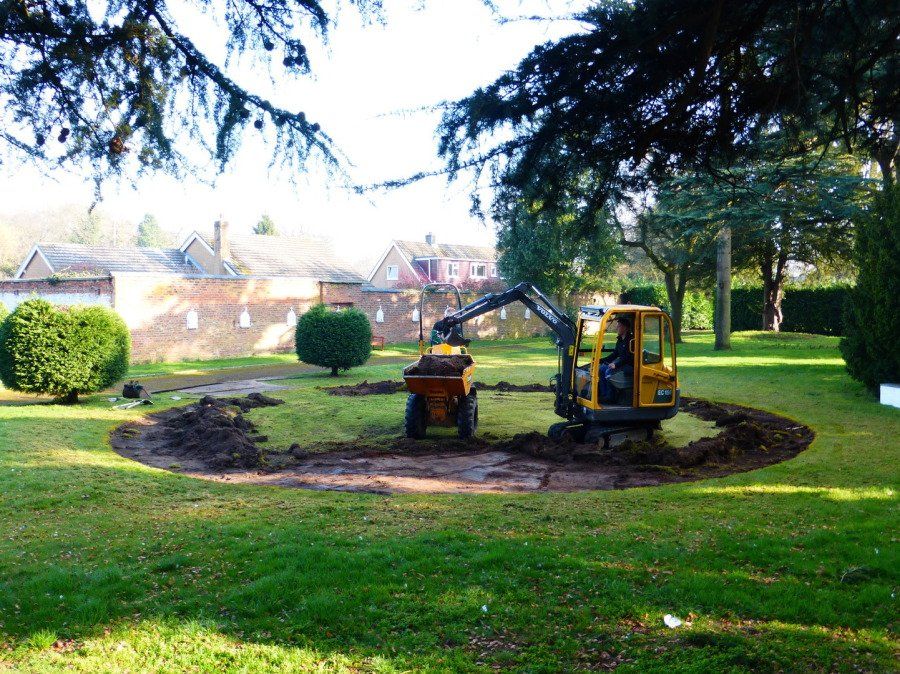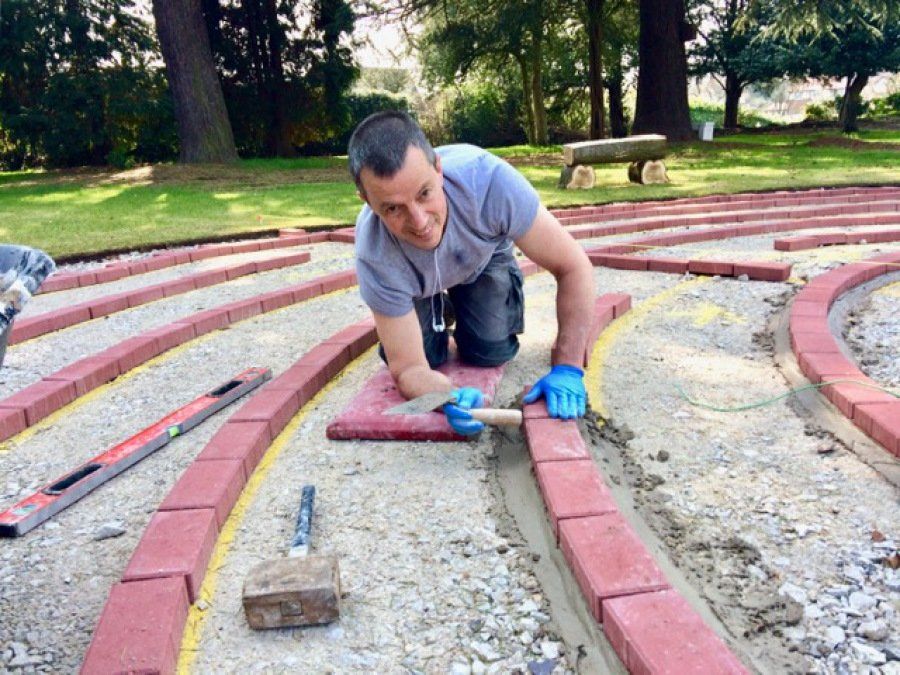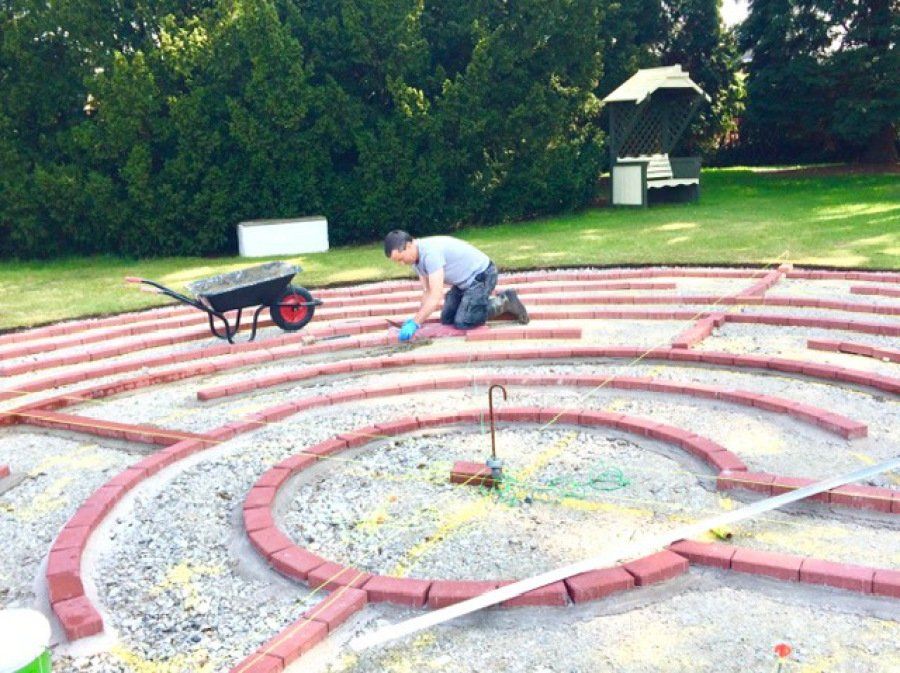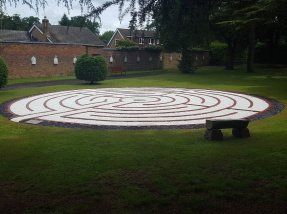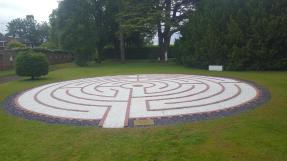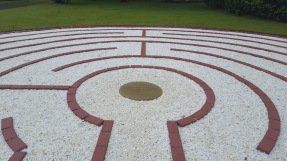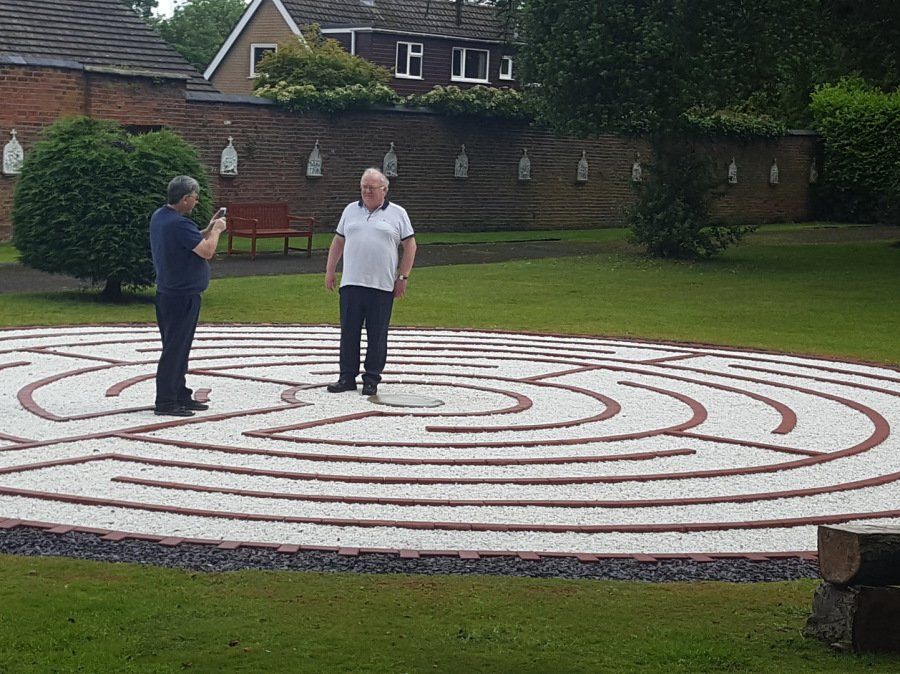THE LABYRINTH
In English, the term labyrinth is generally synonymous with maze. Although a labyrinth only has a single path to the centre, unlike a maze which refers to a puzzle with choices of path and direction.
The earliest examples were found carved on racks and painted or scratched onto pottery and date to the Neolithic or Bronze Age periods, although are difficult to date precisely. The same design found on coins from Crete from the first few centuries BC, symbolise the labyrinth at Knossos in which the legendary Minotaur was said to be imprisoned.
Prehistoric labyrinths may have served as traps for malevolent spirits or as paths for ritual dances. Many Roman and early Christian labyrinths appear at the entrance to buildings, suggesting they may have been used to ward off evil.
The full flowering of the Medieval labyrinth came about from the 12th – 14th centuries with the grand pavement labyrinths of the gothic Cathedrals, notable Chartres, Riems and Amiens in northern France.
During the Medieval period, the labyrinth symbol developed into a more intricate form, reflecting the complexities of faith, life, and philosophy in the Medieval mind.
Spirituality of Labyrinths
Labyrinths offer the opportunity to walk in meditation to that place within us where the rational merges with the intuitive and the spiritual is reborn. A labyrinth’s purpose is to help the walker find his or her way. There is only one entrance that starts at the outer edge, goes into the centre, which then becomes the path back out. It combines the perfection of the circle and the imagery of the spiral into a meandering but purposeful path. Labyrinths have long been used as meditation and prayer tools.
Labyrinth walking is an ancient practice used by many different faiths for spiritual centring, contemplation, and prayer. Entering the serpentine path of a labyrinth, you walk slowly while quieting your mind and focusing on a spiritual question or prayer.
Praying the Labyrinth
There is no right way to walk a labyrinth. You only have to enter and follow the path. Once you have started to walk, you are on a journey to the centre. There is no need to rush. Some will walk faster, others more slowly.
The walk to the centre can represent a letting go or ‘purging’ of things that interfere with your relationship with God. The centre of the labyrinth can symbolize the place where the walker receives illumination or simply rests in whatever the experience offers.
The Building of the Labyrinth
Nick started to build the labyrinth in February 2019 and took about four months to complete it.
In total it took 15 tonnes of hardcore, 870 bricks which had to be cemented down, 8 tonnes of polar white marble and 1 tonne of blue slate.
The plaque at the centre reads “Come away with me… Rest for a while” (Mark 6:31).


